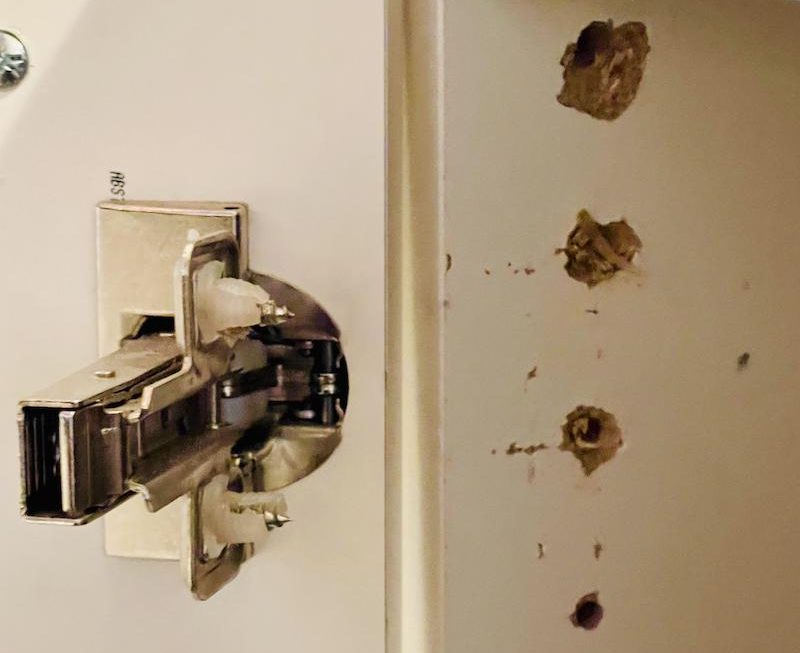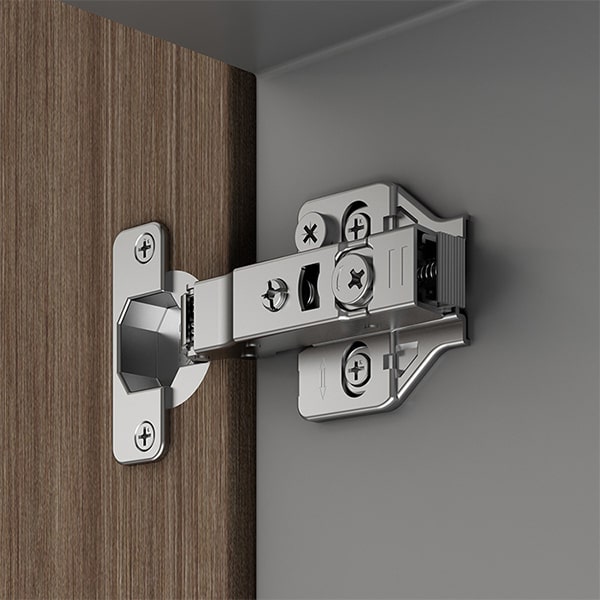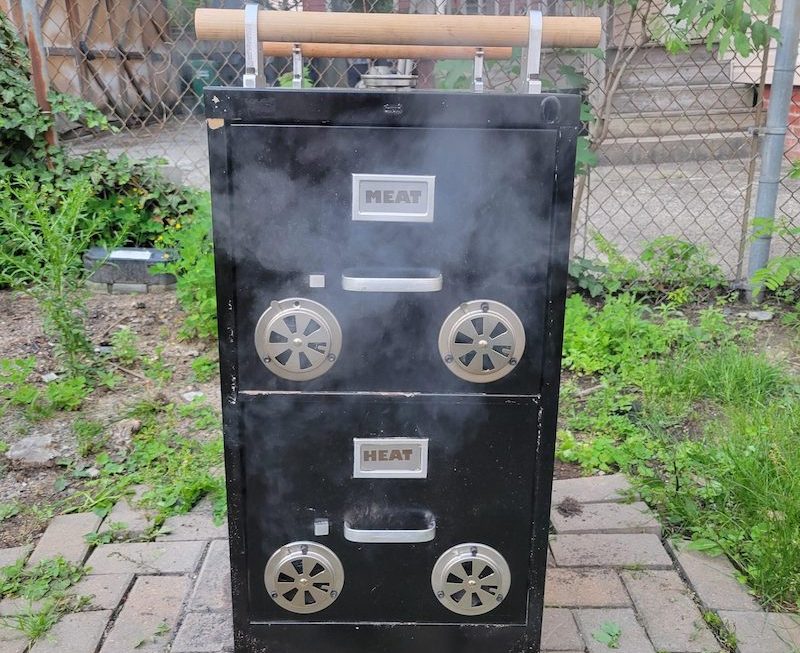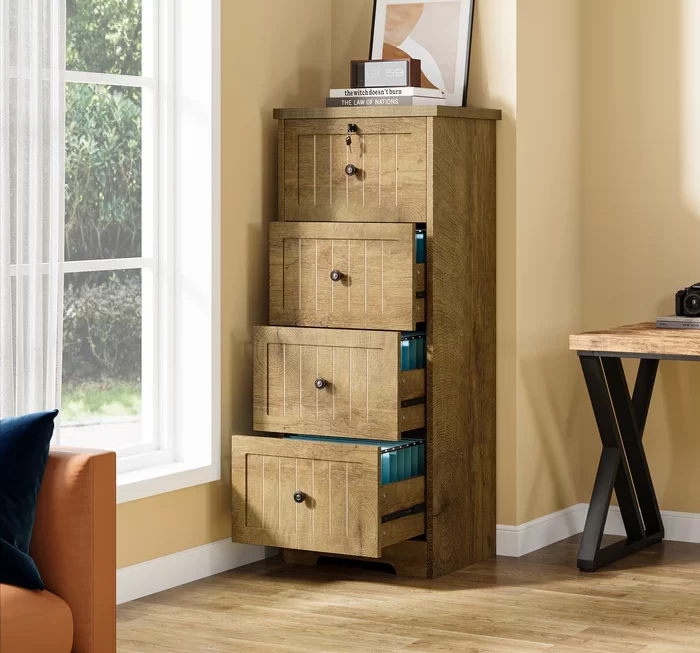Identifying the Root Cause
When your cabinet door won’t close all the way, it’s crucial to identify why it’s happening. Correctly identifying the problem is the first step to finding the right solution. Start by asking: Are the hinges loose? Is the door warped? Or, could it be environmental factors at play? Once you pinpoint the root cause, you can address it effectively.
Troubleshooting Common Issues
A cabinet door that doesn’t close properly often has a simple fix. Check hinges for loose screws and tighten them with a screwdriver. Look for obstructions that could prevent the door from closing. Ensure that there are no items inside the cabinet obstructing the door.
Inspecting Hinge Mechanisms
Hinges are vital for door function. Inspect them for any signs of damage or wear. Check if they are properly aligned with the door and cabinet frame. Use a screwdriver to make adjustments. If needed, lubricate the hinges to ensure smooth movement.
Examining for Environmental Damage
Wooden doors can warp due to humidity or moisture. Look for signs of warping or swelling in your cabinet doors. Consider the climate you live in and how it may affect your cabinets. If warping is the issue, a more permanent solution such as replacement may be needed.
Practical Fixes for Misaligned Doors
Misaligned cabinet doors are a common issue with simple fixes. Here’s how to address them.
Tightening Screws and Hardware
First, check screws on your cabinet hinges. Use a screwdriver to tighten any loose ones. This might correct the misalignment and help doors close fully.
Adjusting Hinges for Correct Alignment
Next, adjust the hinge positions. Loosen the screws, shift the door slightly, then retighten. This should help align the door with the cabinet frame, allowing for proper closure.
Resolving Warped Doors
Warped doors need a different approach. They can’t straighten easily. In some cases, applying slight pressure over time can help. Or, it may be time to replace them.
Dealing with Stripped Screw Holes
For stripped screw holes, fill them with wooden toothpicks and glue. Once dry, replace the screw tightly. This should hold the hinge in place and let the door close.
Upgrading Cabinet Components
To prevent your cabinet doors from staying ajar, consider upgrading the components. Effective solutions include installing new hardware that ensures doors shut firmly and stay closed.
Installing Magnetic Catches or Latches
Magnetic catches or latches are a simple fix. They use magnets to keep cabinet doors closed. Adding these can also help align doors correctly. Plus, it’s an easy DIY project.
Switching to Self-Closing Hinges
Self-closing hinges pull doors shut automatically. They’re ideal for a permanent fix to doors that don’t close. This upgrade can add convenience to your cabinets.
Exploring Soft-Close Hinge Adjustments
Adjust your soft-close hinges if doors won’t close right. Sometimes, a quick turn of a screw for tension adjustment is all it takes. It’s a swift and straightforward fix.
Preventative Measures for Longevity
Proper care can extend your cabinets’ life and maintain their appearance and functionality. By adopting a few simple preventative measures, you can avoid common issues that affect cabinet doors, such as misalignment, sticking, or not closing all the way.
Regular Maintenance Tips
Keep hinges tightened to prevent door sagging. Clean them regularly to avoid the build-up of grime. Inspect screws and replace any that are worn or stripped. Use gentle cleaners to avoid damage to the finish of your cabinets.
Moisture and Humidity Control
To prevent warping and swelling, control your home’s humidity levels. Use a dehumidifier in damp areas and avoid placing hot items directly on wood surfaces. Seal wooden cabinets with a finish appropriate for your climate to provide an extra layer of protection.
Protecting Cabinets from Environmental Elements
Sunlight can fade and damage wood over time. Use curtains to limit exposure to direct sunlight. Keep cabinets away from heat sources that can cause drying and cracking. Apply a protective sealant to ward off scratches and stains caused by everyday use.
Addressing Persistent Issues
When your cabinet door continues to resist closing correctly, it’s time to assess long-term solutions.
When to Consider Hinge Replacement
If tightening or adjusting hinges doesn’t help, they may be worn out. Replace old hinges to fix the issue.
Options for Replacing Cabinet Doors
Replacement doors offer a fresh start if repairs fail. Choose new doors to match your decor.
Deciding Between Repairs and Full Replacement
Evaluate the cost and effort of ongoing repairs versus replacing your cabinets entirely for a long-term fix.
Professional Insights and Resources
In this section, we explore professional advice and resources to maintain your cabinets effectively.
Expert Advice on Cabinet Maintenance
Professionals stress the importance of regular inspections to prevent issues from worsening. It is essential to tighten screws and clean hinges routinely for optimal performance. Experts suggest using non-abrasive cleaners to protect cabinet finishes.
Lubricating hinges with silicone spray can ensure smooth operation and avoid creaking noises. For humidity control, using a dehumidifier in damp environments is beneficial. Applying a sealant can also provide an extra layer of protection, especially in climates prone to moisture.
Where to Find Replacement Hinges and Doors
Finding replacement parts for your cabinets can be as simple as visiting local hardware stores or browsing online retailers. Online platforms may offer a wider variety, enabling you to find the exact match for your cabinets.
For hinges, select ones that can support the weight and size of your cabinet doors. Many online tutorials can guide you through the installation process. Some websites also offer custom-made doors to fit your specific cabinet dimensions perfectly.
Seeking Professional Help for Installation
If DIY solutions are outside your comfort zone, hiring a professional may be the best choice. A skilled carpenter or handyman can ensure proper installation and alignment.
Conclusion
A cabinet door that won’t close all the way can be frustrating, but it’s usually a problem that can be fixed with some simple troubleshooting. Look for any objects or debris that might be blocking the door from closing properly. This could include paint drips, screws, or other small items. Sometimes, the hinge pins can become misaligned or bent, preventing the door from closing smoothly. Make sure the hinges are clean and free of obstructions. Wood doors can warp over time due to humidity changes. If the door has warped, it may not close properly. You can try adjusting the hinges to compensate, but in severe cases, you may need to replace the door. If the cabinet frame itself has warped, this can also cause alignment issues. In this case, you may need to reinforce or replace parts of the frame.
If the cabinet is mounted on an uneven surface or wall, it could affect how the door closes. Use a level to check if the cabinet is sitting evenly. If it’s not, you may need to adjust the cabinet’s position or add shims to level it out. If none of the above solutions work, or if you’re uncomfortable making adjustments yourself, consider consulting a professional carpenter or handyman who can assess the situation and make the necessary repairs.
Cabinet door won’t close all the way? Professionals can also assess the situation and offer long-term solutions, potentially saving you time and money. They may help determine whether repairs or a full replacement would be more cost-effective. For installation or significant repairs, never hesitate to seek expert assistance to guarantee quality work.






